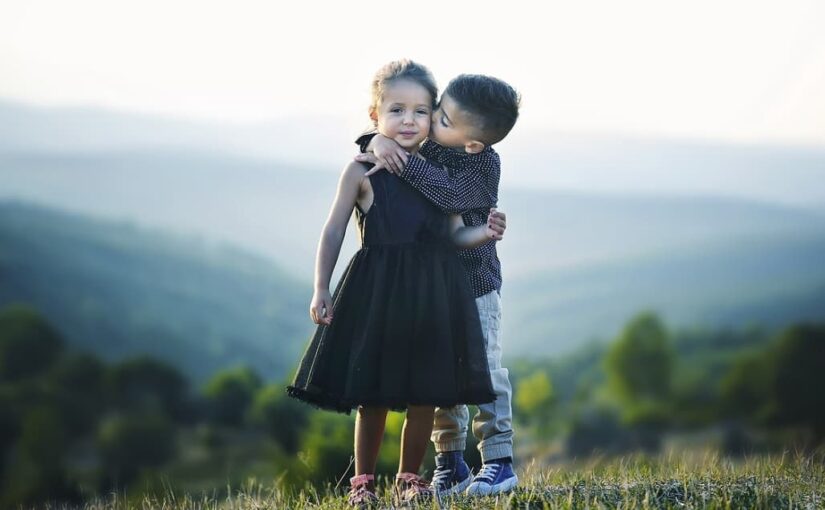The Cultural Significance of Cheek Kisses
At some juncture in their lives, particularly for those who venture abroad for travel or study, individuals may find themselves ensnared by the cheek-kiss dilemma. Deciphering whether a handshake, hug, or cheek-kiss is appropriate can be a quandary. And, should one decide on a cheek-kiss, the execution thereof presents its own set of challenges: How many kisses? Which cheek first? Avoiding the awkwardness observed in unfortunate couples becomes a priority.
Understanding the nuances of the cheek-kiss can significantly enhance one’s cultural dexterity. Below are insightful strategies for navigating the cheek-kiss with grace:
Preparation Is Key
Navigating the terrain of social greetings, particularly the cheek-kiss, requires a nuanced understanding of the context and setting one finds oneself in. The dynamics vary significantly between group settings and individual encounters. Here’s a more detailed exploration:
- Group Settings: In such environments, the opportunity to observe and mimic the greeting norms of others is invaluable. Watching how acquaintances greet each other provides a template for appropriate behavior, reducing the likelihood of social faux pas;
- Solo Interactions: These situations demand a higher level of social intuition. Being attuned to the subtleties of the encounter can guide one’s greeting choice. A few considerations include:
- Professional vs. Casual: Professional settings often dictate a more formal approach, typically a handshake. However, in more relaxed or personal contexts, a cheek-kiss may be the norm;
- Cultural Awareness: Understanding the cultural backdrop of the interaction can inform whether a cheek-kiss is appropriate and, if so, how it should be executed;
- Personal Comfort: It’s also important to gauge one’s own comfort level and that of the other person. Opting for a handshake when unsure can provide a safe alternative.
- Anticipating Social Context: A proactive stance in anticipating the nature of the meeting can prevent awkward encounters. Whether it’s a professional networking event or a casual gathering among friends, aligning one’s greeting method with the expected social norms is key.
In essence, mastering the art of the cheek-kiss and other social greetings involves a blend of observation, cultural sensitivity, and adaptability. Each setting offers unique cues that, when navigated skillfully, can enhance social interactions and build rapport.
Establishing the Approach
Committing to a cheek-kiss entails a proper setup. Initiating contact by lightly placing a hand on the other person’s upper arm can set the tone for the ensuing gesture. It’s imperative to approach gently to avoid startling the other party. As for the direction of the cheek-kiss, while the right cheek is commonly preferred, an exception exists for Italy, where the left cheek initiates the gesture. Understanding this subtle differentiation can avert potential awkwardness.
Deciphering the Number of Kisses
The complexity of the cheek-kiss further unfolds with the variance in the number of kisses across different cultures. Spain, Italy, and much of France traditionally opt for two kisses, one on each cheek. However, regional differences may prescribe one, three, or even four kisses. The safest bet often lies in a single, swift kiss on each cheek, avoiding direct contact and opting instead for a cheek-to-cheek touch accompanied by an air kiss. Fortunately, the occurrence of an actual cheek kiss is rare, sparing most from the awkwardness of navigating physical proximity.
The Encore
Mastering the initial greeting paves the way for a seamless farewell. Mirroring the initial gesture ensures consistency and ease in parting. The essence of mastering the cheek-kiss lies in maintaining composure, speed, and not overthinking the process. Embracing the cultural context and following one’s instincts allows for confident and adept cheek-kissing, marking one’s social interactions with a touch of finesse.
Overall
In essence, the cheek-kiss, with its nuanced variations and cultural significance, stands as a testament to the diverse nature of human social interactions. Navigating this delicate social ritual requires a blend of observation, adaptability, and respect for cultural norms. By equipping oneself with the knowledge of when and how to engage in this gesture, individuals can foster deeper connections and show respect for cultural traditions. Whether it’s a single kiss in some regions or multiple in others, the act of cheek-kissing transcends mere physical contact, embodying a universal expression of greeting, farewell, and mutual respect. As society continues to globalize, understanding such cultural intricacies becomes not just a social asset but a bridge to fostering global harmony and understanding.
